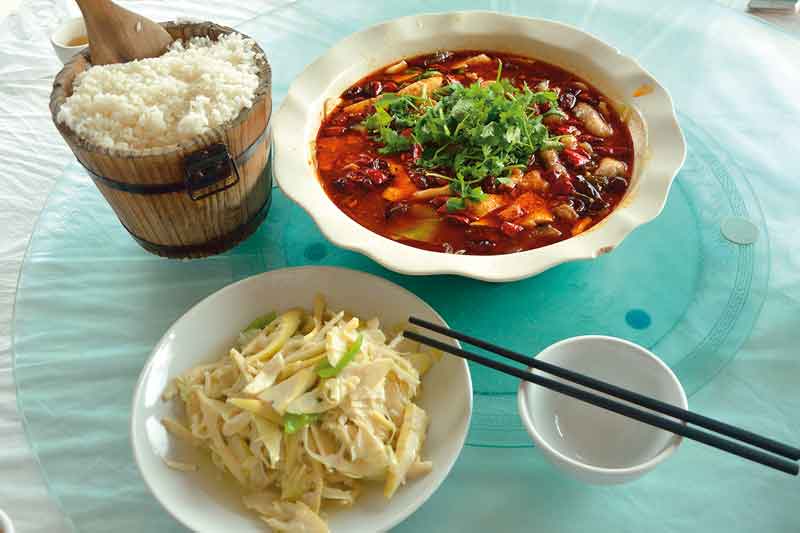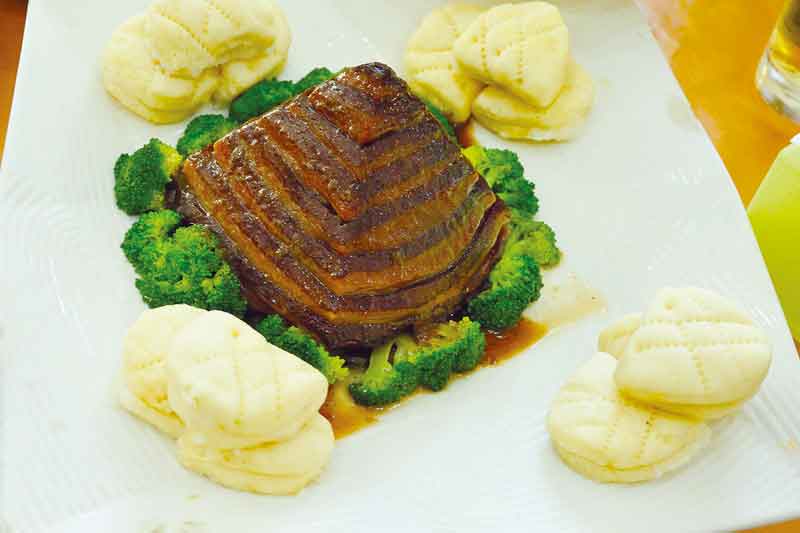
CHENGDU IT YOURSELF
In a cuisine-rich place like Chengdu, no reservations are necessary to eat well – as long as you have no reservations in eating its bold, fiery food.
Words & Photos: Mark Pochaw
We arrived in Chengdu late evening, weary travellers with growling stomachs. It was close to 9 o’clock at night, the dreaded hour when you just have to take your chances for any decent meal. But we were excited to be in a city lauded for its culinary culture and dramatic landmarks. While Chengdu served as the base, we were also taking advantage of its gateway to some of the more ancient and beautiful parts of China.
Any visit to Chengdu includes pandas, the giant Buddha image at Leshan, and the awe-inspiring height of Mount Emei. But it’s what we can eat going from place to place the fuelled our anticipation. We were told that the simplest pedestrian bowl of noodles is just as delicious and executed with as much technical prowess as Chengdu haute cuisine. Our group decided to just explore and see where it took us, the only must-eat item being the famous Mapo Tofu. That, we ordered and sampled practically every place we visited.
We retained a local tour guide for exactly one reason: in addition to his recommendations for local eateries, we needed an interpreter for our culinary adventures. We wanted to be able to walk into any local establishment and ask or request anything without a language barrier. We weren’t looking for the most exotic items but wanted to be able to ask about the ingredients. It was a really good idea since the first snack we encountered were rabbit skulls, um, head, dunked in chilli oil. We wouldn’t have wanted to order that by mistake.


Across the street from the hotel seemed a good choice for the first meal. Keep it simple, we tell ourselves and head to a mom-and-pop eatery. However, a display of semi-wilted vegetables and other unrecognisable grees that marked the remains of the day didn’t seem promising. Our stir-fry dishes arrived with rice and the first bite revealed depth of flavour despite the simplicity of the cooking.
A nondescript eatery with straightforward dishes whipped up quickly and delicious. Were we just lucky? No, that’s Chengdu. The fist meal set the tone for the rest of our trip. Other fascinating seasonal vegetables started to appear. We heard tongue-twisting names, such as celtuce, osmanthus – all sounded so exotically new and, it turns out our guide Jay from yakpanda.com, who had trained to be a chef at one time, explained to us that the first item to master in a Sichuan chef’s training was how to make the right and proper “red oil”. Most dishes were intense colours of red, made so by the presence of dried chillies and the aromatic Sichuan peppercorns, with a final taste profile that’s balanced by dark vinegar and generous presence of peanuts.
The first side trip was to Huanglongzi ancient town. Harking back to the Qing Dynasty, we walked through seven cobbled-stone streets and nine alleys with streams and water snaking through the village. Grandma vendors approached female visitors to sell crowns fashioned from dahlia flowers; just like the colourful ones worn at a Swedish midsummer festival. Whether it was just a touristy gimmick or not, everyone looked as picturesque as the rest of the town.
